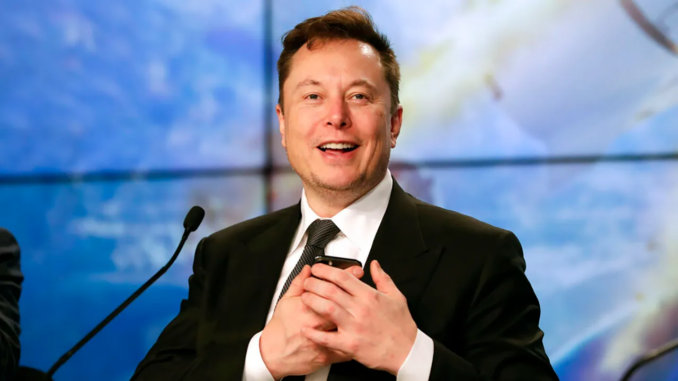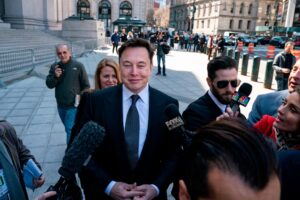
Almost buried beneath a recent avalanche of rightwing invective posted by Elon Musk on the platform he owns, X, was one eye-popping statement that made space watchers sit up and take notice: an assertion that humans could land on Mars within four years and be living there in a self-sustaining city in 20.
It seemed a fanciful boast, even by the standards of the SpaceX founder and world’s richest man, who transformed the logistics and cost of shorter-duration, near-to-Earth orbit space travel with his fleet of reusable Falcon rockets. The US government space agency, Nasa, which is collaborating with SpaceX over knowledge and technology to get astronauts to the red planet, believes a first crewed landing by 2040 would be “audacious”.
Neither was it the first time the enigmatic billionaire has floated such a plan. In 2016 he said he believed those first crewed launches to Mars could take place within six years, even though a heavy rocket to fly them was still at the concept stage.
Yet while many might see Musk’s latest proclamation as another example of his braggadocio, following stories he wanted to help populate an extraterrestrial civilization with his own sperm, and have it driving around the Martian surface in Tesla’s troubled Cybertrucks, some analysts see a sense of purpose.
If a Mars settlement of a million people in two decades’ time is an impossible goal, the prospect of regular shuttle flights from Earth aboard SpaceX’s next-generation Starship rockets, carrying cargo and the first human explorers, is absolutely achievable, they say.

And while Musk’s estimated personal fortune of $250bn (£191bn) cannot come close to funding what would be the most expensive and extensive undertaking in spaceflight history, dwarfing the $280bn (in today’s money) Nasa spent on the Apollo program that put man on the moon in 1969, potential investors from both public and private sectors stand to be enthused.
Musk’s tweet, the experts say, has accelerated discussion about the immediate ambitions of SpaceX and the longer-term prospects for humanity itself.
“If I were diagnosing why now to set this very aggressive timeline for Mars, it’s partly to show that SpaceX isn’t slowing down, it’s not resting on its laurels, it’s not turning into kind of a creaky dominant player in space, and it is still the innovative pushing-the-envelope startup that it is,” said Matthew Weinzierl, professor of business administration at Harvard Business School specializing in the economics of space.
“Whether it’s Elon Musk, Gwynne Shotwell [SpaceX’s chief operating officer] or the incredibly deep bench of talent they have, I think of SpaceX as being really good at two things among many. One is turning market forces into achievements that were previously thought unachievable, and the other is turning these unachievable visions into market success.
“That’s the core of what the Mars thing is all about for them, attracting talent, passion, capital and hard work from the people associated with SpaceX. The Mars mission has always been authentically central to what they talk about as why they exist.
“At a broader level, when you’re trying to create a company that is going to change at a truly unprecedented scale what we do in space and rethink the future of humanity, then having a vision of this scale makes so much more possible.”
Weinzierl noted that revenue from Musk’s other commercial space operations, notably the Starlink satellite internet system and its militarized sister network Starshield, is central to funding his objectives. But similar to the recyclable Falcon rockets and Dragon capsules that have made the low-cost ferrying of astronauts to the International Space Station almost routine, the SpaceX model of renew and reuse can work for Mars too.
“It’s always hard to know precisely how SpaceX is calculating these things because it’s private, but when they talk about the cost of flying Starship, the numbers are astonishingly low, in the tens of millions, or even $10m per flight,” Weinzierl said.
